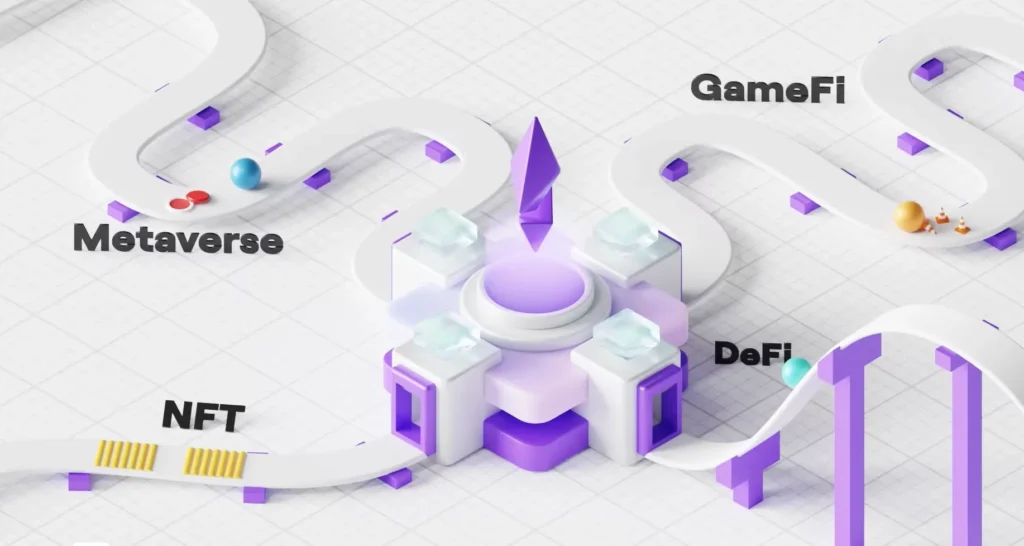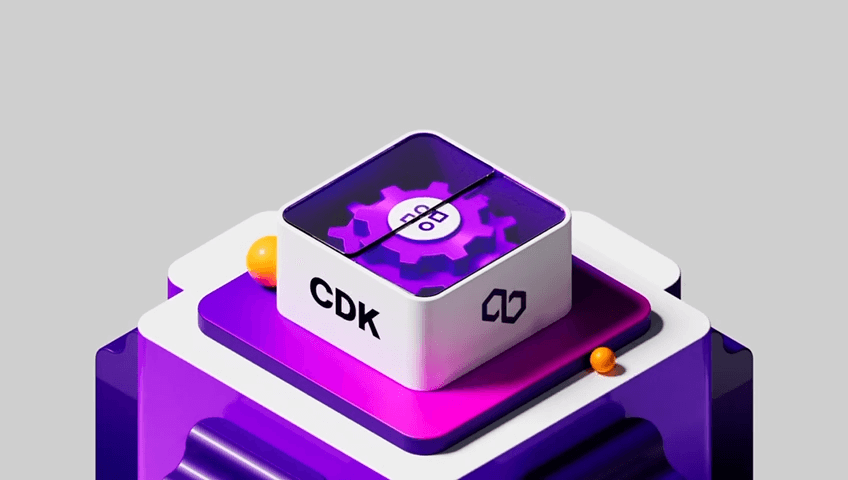Latest News
- Polygon (POL/USD) 4H - March 26, 2025: POL (Old MATIC) Waking Up? Already Up 20% as Bullish Momentum Kicks In!
- XRP and Solana Lead Altcoin ETP Inflows Amid Shifting Market Sentiment
- XRP, Solana lead altcoin ETP inflows as Ethereum slumps — CoinShares
- Bitcoin ETFs Saw $724 Million In Inflows Last Week, Snap Outflow Streak: Report
Welcome to our Polygon review.
Polygon (MATIC) is becoming a significant player in the blockchain landscape, particularly as a Layer 2 scaling solution for Ethereum.
Its innovative use of technologies such as Plasma and zk-Rollups not only enhances transaction efficiency but also lowers costs, making it a conducive environment for developers engaged in decentralized applications.
As we explore its key features, benefits for developers, and real-world applications, the question arises: how does Polygon’s approach compare to other scaling solutions, and what implications does this hold for the future of blockchain technology?
Let’s find out in this review.
Quick Overview
- Polygon is a Layer 2 scaling solution for Ethereum, enhancing transaction speed and reducing costs using technologies like Plasma and zk-Rollups.
- Its modular architecture allows developers to create customizable blockchain solutions, fostering innovation and experimentation.
- Polygon’s compatibility with Ethereum simplifies the migration of decentralized applications (dApps), making it easier for developers to transition.
- The platform supports diverse use cases, including DeFi, NFTs, and gaming, enhancing the utility of digital assets.
- With a strong security model and active governance, Polygon engages MATIC token holders in key decision-making processes.
Overview of Polygon
Polygon, a Layer 2 scaling solution for Ethereum, has emerged as a vital player in the blockchain ecosystem, aiming to enhance transaction speed and reduce costs. By addressing Ethereum’s scalability challenges, Polygon facilitates a more efficient environment for decentralized applications (dApps) and smart contracts. This solution enables a multitude of transactions to be processed off the main Ethereum chain, effectively alleviating congestion and minimizing gas fees.
The architecture of Polygon incorporates various technologies, including Plasma chains and zk-Rollups, which contribute to its efficacy. These mechanisms allow for greater throughput while maintaining the security and decentralization inherent to the Ethereum network.
Additionally, Polygon offers a framework for developers to create and connect their own blockchain networks, fostering interoperability within the Ethereum ecosystem.
As the demand for dApps continues to rise, Polygon’s role in simplifying user interactions and reducing transactional friction becomes increasingly significant. Its growing adoption among developers and projects underscores its importance in the broader context of blockchain technology.
Here’s a great review video of Polygon (MATIC):
Key Features of Polygon
At the core of Polygon’s appeal are several key features that enhance its functionality as a Layer 2 scaling solution. First and foremost is its compatibility with Ethereum, allowing developers to leverage existing Ethereum infrastructure while mitigating scalability issues. This interoperability is essential for the seamless migration of decentralized applications (dApps) to the Polygon network.
Another significant feature is the implementation of various scaling mechanisms, including Plasma chains and zk-Rollups, which facilitate faster transaction processing and reduced costs. These technologies enable Polygon to handle thousands of transactions per second, addressing the congestion often seen on the Ethereum mainnet.
Furthermore, Polygon’s modular architecture supports a diverse range of applications, from gaming to DeFi, thereby attracting a broad developer community. The network’s robust security model, which includes a system of validators and the ability to utilize Ethereum’s security through a proof-of-stake mechanism, enhances trust and reliability.
Lastly, the active governance model allows MATIC token holders to participate in decision-making processes, fostering community engagement and aligning interests. Collectively, these features position Polygon as a versatile and efficient solution in the evolving landscape of blockchain technology.
How Polygon Works
Leveraging its unique architecture, Polygon operates as a Layer 2 scaling solution that integrates seamlessly with the Ethereum network. By employing various technologies such as Plasma, zk-Rollups, and Optimistic Rollups, Polygon enhances transaction throughput while maintaining the security and decentralization of Ethereum.
This architecture allows for the bundling of multiple transactions into a single batch, considerably reducing the load on the Ethereum main chain.
Polygon’s framework consists of a set of modular and interchangeable components, enabling developers to customize their blockchain solutions according to specific needs. It supports both Ethereum-compatible chains and standalone chains, which increases flexibility for application development.
Additionally, the Polygon SDK facilitates the creation of Layer 2 solutions, allowing for easy deployment of decentralized applications (dApps).
Benefits for Developers
Empowering developers through its versatile architecture, Polygon offers a range of benefits that facilitate the creation and deployment of decentralized applications. One of the most significant advantages is its compatibility with Ethereum, enabling developers to leverage existing tools and frameworks such as the Ethereum Virtual Machine (EVM). This compatibility reduces the learning curve and accelerates development timelines, allowing for more efficient project execution.
Additionally, Polygon provides a highly scalable environment, which addresses one of the critical limitations of Ethereum—network congestion. By utilizing Layer 2 solutions, developers can achieve faster transaction speeds and lower fees, making it economically viable for a broader range of applications. This scalability fosters innovation, as developers can experiment with more complex functionalities without fear of prohibitive costs.
Moreover, the robust security model of Polygon, which includes a decentralized network of validators, enhances the trustworthiness of deployed applications. Developers can focus on building features and improving user experience rather than worrying about underlying security issues.

Comparing Ethereum Layer 2’s
Our expert team here at Trade Wise have researched the most popular Ethereum layer 2 protocols and created a comparison table so that you can quickly see how they stack up against each other.
We collected this data in June 2024 so it may change over time.
This table contains all the data you need to make an informed comparison of how the most popular layer 2 blockchains perform and the strengths and weaknesses of each.
Trade Wise ETH Layer 2 Comparison Table
| Layer 2 | Tokens | Mainnet | Type | Focused on | Launch Year | TPS | Estimated Gas (USD) |
|---|---|---|---|---|---|---|---|
| Polygon | MATIC, POL | Ethereum | Sidechain, zk-rollups | DeFi, Web3, NFTs, dapps | 2017 | 65,000 | $0.0005 |
| Arbitrum | ARB | Ethereum | Optimistic rollups | DeFi, Web3, NFTs, dapps | 2021 | 40,000 | $0.10 |
| Optimism | OP | Ethereum | Optimistic rollups | DeFi, Web3, NFTs, dapps | 2021 | 2,000 | $0.20 |
| Metis | METIS | Ethereum | Hybrid rollups | DeFi, Web3, NFTs, dapps | 2021 | 4,000 | $0.03 |
| ImmutableX | IMX | Ethereum | Zk-rollups | Games, NFTs | 2018 | 9,000 | $0.002 |
| Mantle | MNT | Ethereum | Optimistic rollups | DeFi, Web3, NFTs, dapps | 2023 | 1,000 | $0.15 |
| Stacks | STX | Bitcoin | Parallel chain | Dapps, Ordinals | 2021 | 300 | $0.50 |
Use Cases and Applications
A diverse array of use cases and applications has emerged on the Polygon network, showcasing its versatility and potential within the blockchain ecosystem. One prominent application is decentralized finance (DeFi), where Polygon facilitates faster and cheaper transactions for lending, borrowing, and trading activities. Several DeFi protocols, such as Aave and SushiSwap, have integrated with Polygon, enabling users to leverage its scalability while enjoying lower fees compared to Ethereum.
Additionally, Polygon supports non-fungible tokens (NFTs), providing a platform for artists and creators to mint, buy, and sell digital assets cost-effectively. The lower transaction fees and reduced congestion on the network enhance the user experience for NFT marketplaces like OpenSea and Rarible.
Moreover, Polygon is increasingly being utilized in gaming, offering developers the tools to create immersive experiences without the limitations of traditional blockchain transactions. Games such as Decentraland and Axie Infinity have started to explore Polygon’s potential for enhancing user engagement and streamlining in-game economies.
Lastly, Polygon’s interoperability allows seamless integration with multiple blockchains, fostering a more connected blockchain ecosystem that enhances the overall utility of digital assets across different platforms.
Market Performance and Trends
The market performance of Polygon (MATIC) is characterized by fluctuating price movements that reflect broader trends within the cryptocurrency sector.
An analysis of trading volume offers insights into investor interest and liquidity, while market capitalization trends highlight the token’s relative position in the market hierarchy.
Together, these factors provide a thorough view of MATIC’s standing and potential trajectory in the evolving digital asset landscape.
Price Movement Analysis
In recent months, Polygon (MATIC) has experienced notable fluctuations in its price, reflecting broader market trends and investor sentiment. Following a period of robust growth, MATIC’s price surged to new highs, driven by increasing adoption of its layer-2 scaling solutions and a burgeoning ecosystem of decentralized applications.
However, this upward momentum was met with corrections that saw the price retrace considerably, mirroring the volatile nature of the cryptocurrency market as a whole. The interplay between macroeconomic factors and regulatory developments has contributed to these price movements.
As inflation concerns and interest rate adjustments loomed, investor confidence wavered, impacting the overall sentiment towards cryptocurrencies, including MATIC. Additionally, competitive pressures from other scaling solutions have influenced market dynamics, prompting MATIC to maintain a proactive development strategy to sustain its market position.
Despite these challenges, Polygon has demonstrated resilience, with strategic partnerships and ongoing upgrades to its platform. As the market stabilizes and investor confidence potentially rebounds, MATIC’s price trajectory may align with renewed interest in blockchain technologies, suggesting that while volatility persists, there are opportunities for recovery and growth in the medium to long term.
Trading Volume Insights
Analyzing the trading volume of Polygon (MATIC) reveals significant insights into its market performance and emerging trends. Trading volume serves as a critical indicator of market interest, liquidity, and investor sentiment. Over recent months, MATIC has experienced fluctuations in trading volume, which correlate closely with notable price movements and broader market dynamics.
One key observation is that increased trading volume often precedes significant price changes, suggesting heightened investor activity and interest surrounding specific news or developments. For instance, announcements related to partnerships, technological upgrades, or regulatory advancements tend to trigger spikes in trading volume, indicating a responsive market environment.
Conversely, periods of low trading volume may signal investor uncertainty or a consolidation phase, where market participants await clearer directional signals.
Moreover, comparing MATIC’s trading volume with that of other major cryptocurrencies provides additional context. A robust trading volume relative to its peers can indicate a stronger market position and greater investor confidence.

Market Capitalization Trends
Shifts in trading volume often reflect broader market dynamics, which in turn influence market capitalization trends for Polygon (MATIC). As a layer-2 scaling solution for Ethereum, MATIC has seen fluctuations in its market cap that correlate with developments in the DeFi and NFT spaces, as well as overall sentiment in the cryptocurrency market.
In recent months, MATIC’s market capitalization has demonstrated resilience amidst market volatility, occasionally ranking within the top 20 cryptocurrencies by market cap. This stability can be attributed to increased adoption of Polygon’s technology, which addresses scalability issues on the Ethereum network, thereby attracting developers and investors alike.
Moreover, significant partnerships and integrations with various platforms have bolstered MATIC’s visibility and utility, contributing to positive market capitalization trends.
However, the cryptocurrency market remains highly speculative, with external factors such as regulatory developments and macroeconomic conditions impacting investor confidence and trading behavior.
Future Prospects of Polygon
As the blockchain landscape continues to evolve, the future prospects of Polygon (MATIC) appear increasingly promising due to its scalability solutions and growing adoption within the decentralized finance (DeFi) ecosystem.
Polygon’s technology, which enhances Ethereum’s capabilities, addresses critical issues such as high transaction fees and network congestion. By providing Layer 2 scaling, it allows for faster and cheaper transactions, making it an attractive option for developers and users alike.
The increasing integration of Polygon with various DeFi platforms further solidifies its position in the market. This trend is underscored by partnerships with prominent projects and a surge in decentralized applications (dApps) built on its network.
As more developers leverage Polygon’s infrastructure, its user base is expected to expand, driving further demand for MATIC tokens.
Moreover, Polygon’s commitment to continuous innovation, including initiatives to enhance interoperability and user experience, positions it favorably in a competitive landscape.
As regulatory frameworks around cryptocurrencies evolve, Polygon’s adaptability could prove crucial.
Comparison With Other Solutions
When comparing Polygon (MATIC) to other blockchain solutions, it becomes evident that its unique Layer 2 scaling approach offers distinct advantages regarding transaction efficiency and cost-effectiveness. Unlike Ethereum, which often suffers from high gas fees and congestion, Polygon greatly reduces these issues by processing transactions off-chain while still benefiting from Ethereum’s security.
This hybrid model facilitates faster transaction times and lower costs, making it highly attractive for decentralized applications (dApps) and DeFi projects.
In contrast, other Layer 1 blockchains, such as Binance Smart Chain and Solana, also aim to provide scalability and lower fees. However, they often sacrifice decentralization, which can lead to vulnerabilities and increased centralization risks.
Polygon’s interoperability with Ethereum allows developers to leverage existing infrastructure, making it a more seamless conversion for projects looking to enhance their performance.
Furthermore, unlike some competitors that focus solely on specific use cases, Polygon supports a diverse ecosystem of applications, from gaming to NFTs.
This versatility, combined with its robust community and extensive developer support, positions Polygon as a compelling option in the rapidly evolving blockchain landscape.
Frequently Asked Questions
What Is the Origin of the Polygon (Matic) Name?
The name “Polygon” reflects the project’s aim to create a multi-layered framework for blockchain scalability. It signifies the interconnectedness of various blockchain solutions, akin to the geometric shape with multiple sides representing diverse functionalities and applications.
Who Are the Founders of Polygon?
The founders of Polygon are Jaynti Kanani, Sandeep Nailwal, and Anurag Arjun. They aimed to enhance Ethereum’s scalability and usability, addressing critical challenges in blockchain technology through innovative solutions and a robust ecosystem.
How Can I Purchase MATIC Tokens?
To purchase MATIC tokens, individuals can utilize cryptocurrency exchanges such as Binance, Coinbase, or Kraken. The process typically involves creating an account, verifying identity, and executing a buy order using fiat currency or other cryptocurrencies.
What Wallets Support Storing Matic?
Several wallets support the storage of MATIC tokens, including MetaMask, Trust Wallet, Ledger, and Coinbase Wallet. These wallets provide secure options for managing assets while ensuring compatibility with the Ethereum and Polygon networks.
Is There a Community or Forum for Polygon Users?
Yes, there are several communities and forums dedicated to Polygon users. Platforms such as Reddit, Discord, and Telegram host active discussions, enabling users to share insights, seek assistance, and foster collaboration within the ecosystem.
Wrapping Up
To conclude, Polygon (MATIC) aspires to become a robust Layer 2 scaling solution that effectively addresses Ethereum’s scalability challenges through innovative technologies such as Plasma and zk-Rollups.
Its modular architecture and active governance foster a conducive environment for developers, facilitating the creation of diverse decentralized applications.
With strong market performance and a promising future, Polygon is positioned to play a pivotal role in the ongoing evolution of the blockchain ecosystem, particularly in sectors like DeFi, NFTs, and gaming.

